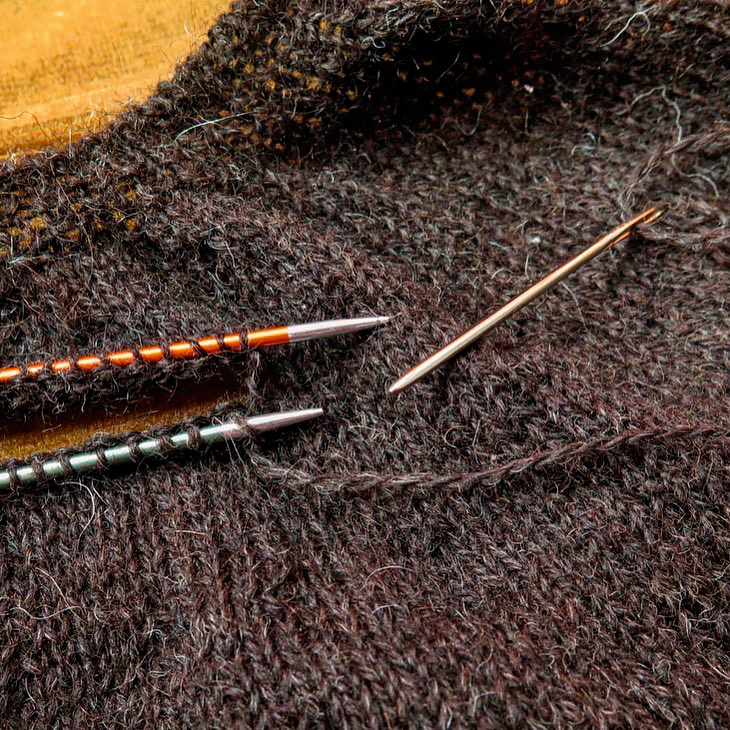Step 1
If you choose to do this, the easiest method would be to pick up all of the stitches before you begin unpicking…
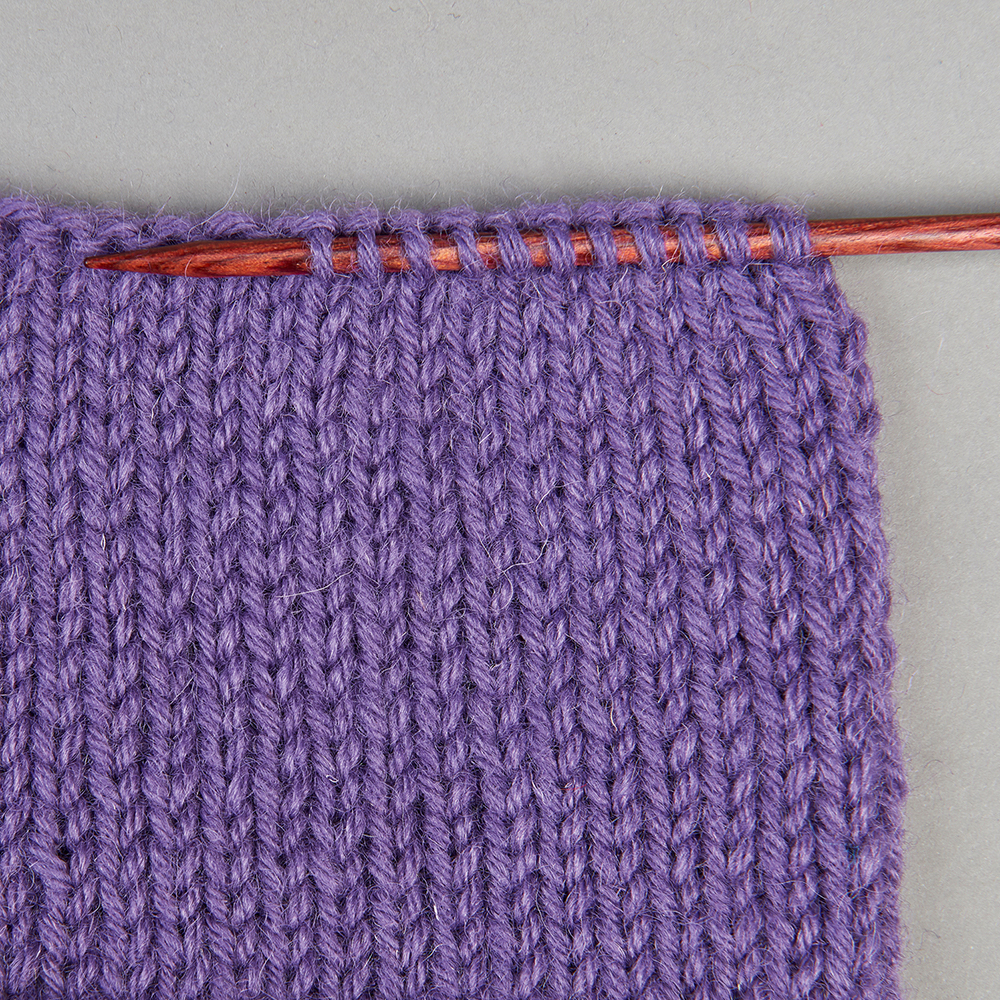
Step 2
…then gradually follow where the yarn tail is going and undo stitch by stitch on to a second needle.
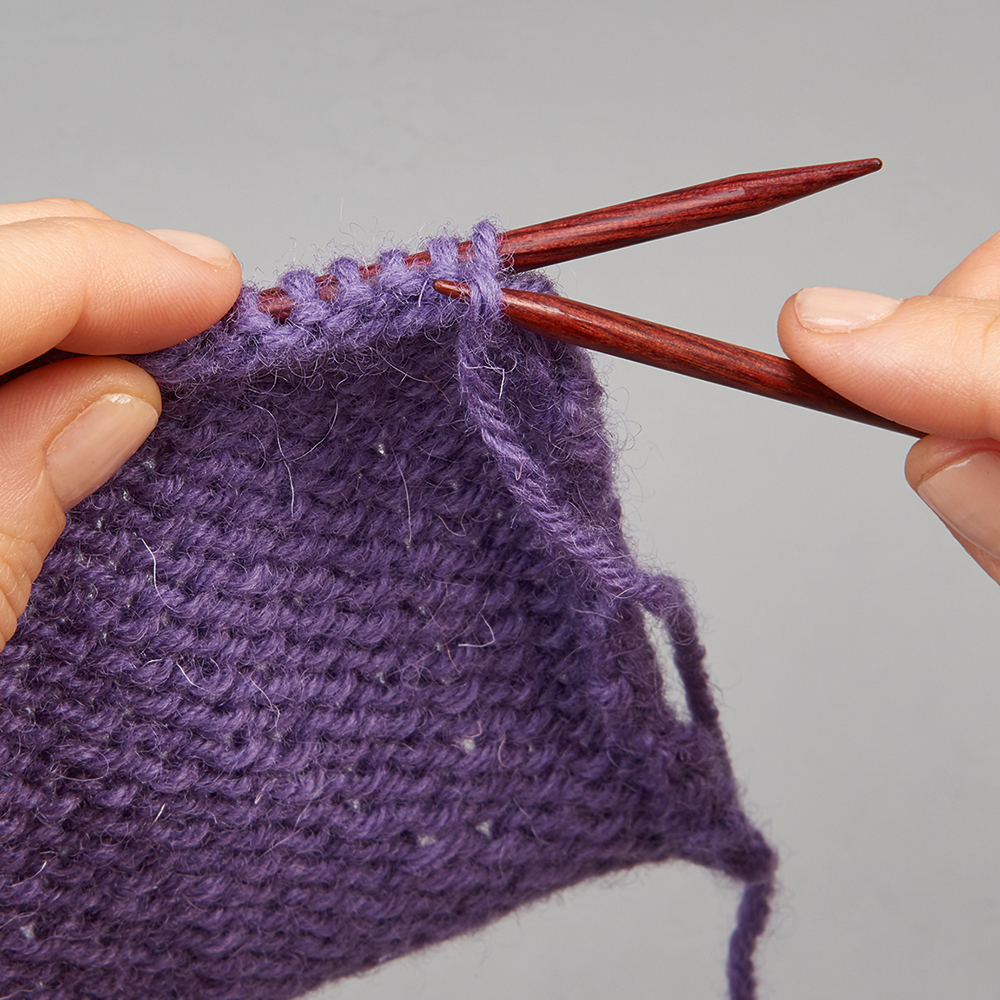
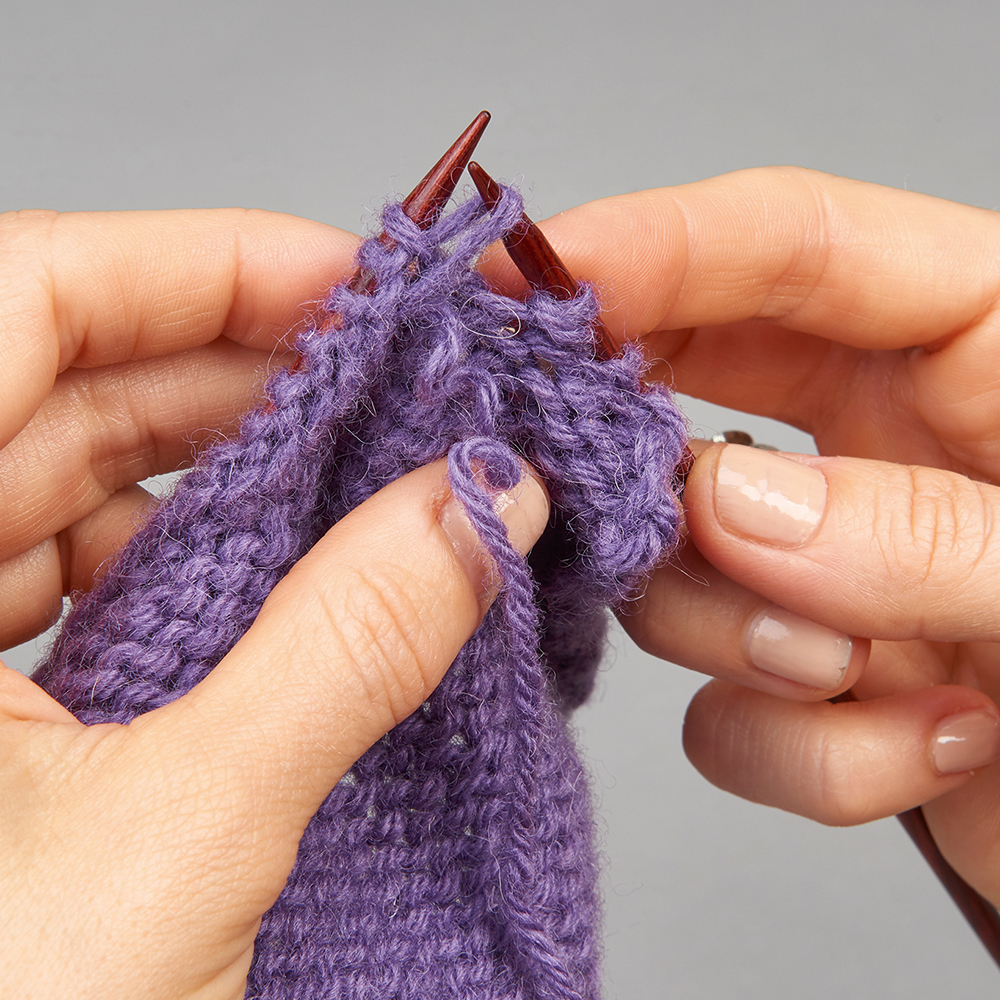
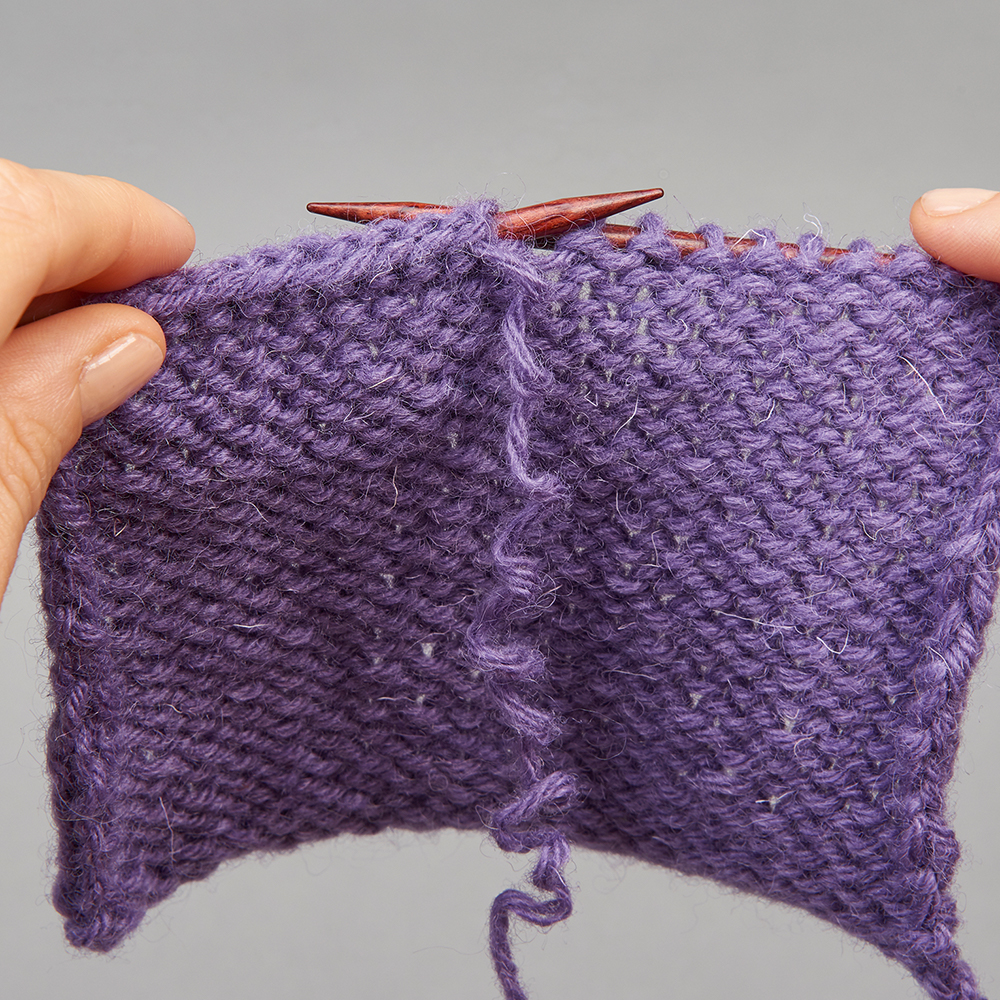
Step 3
However, the stitches you’ll pick up from the cast-on will all be half a stitch out, so they won’t actually sync up properly with the row you’re knitting into. If you’re working stocking stitch, this isn’t a bad option as it’s only really noticeable at the sides; however, in rib, you’ll see from our example that it’s quite obvious.
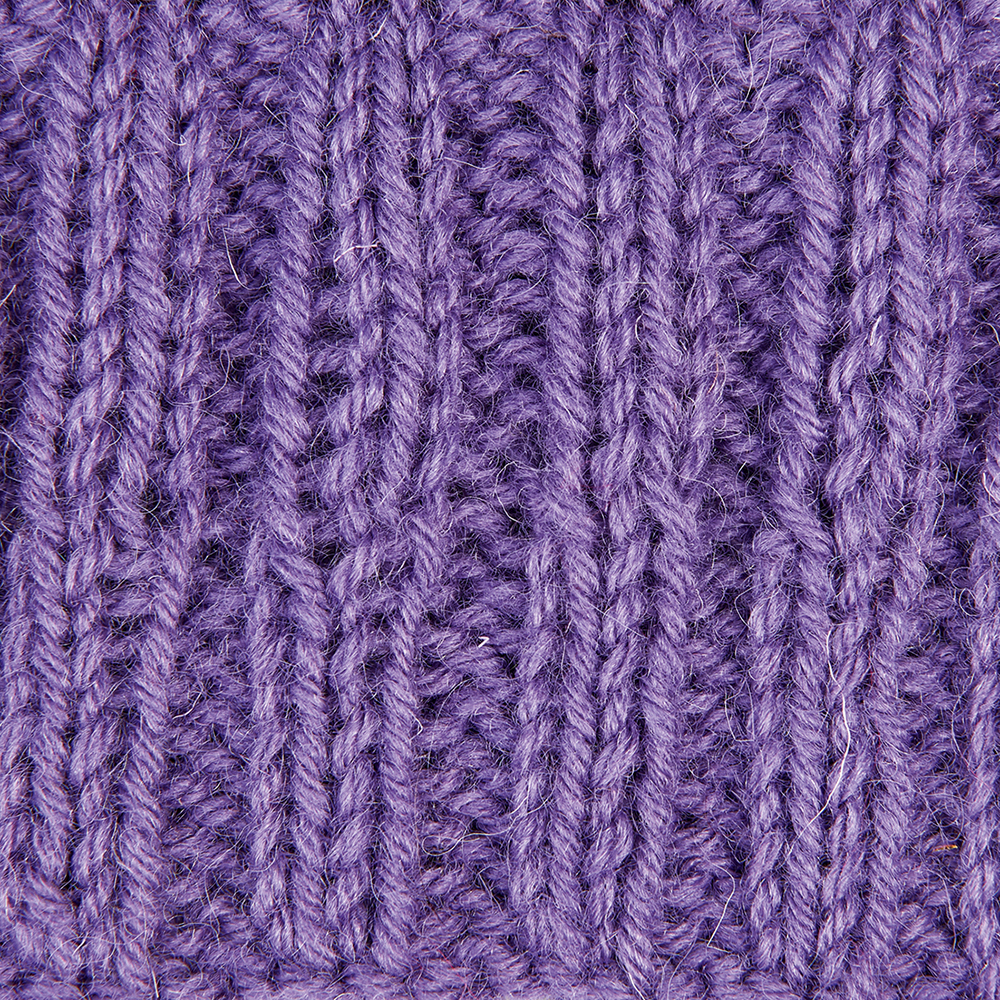
Step 4
There are ways around this – you could always make a feature of it and knit a couple of rows in garter stitch before continuing the rib – but you might find it neater to do one of the following options.
Your best bet would be to cut your knitting at the place where you’d like to extend it, pick the stitches back up, knit a few extra rows and then graft it using Kitchener stitch back to the other section. So, look for a place where there is no increasing happening – ideally before the waist shaping begins (unless you need to change the length between the end of the waist decreases and the beginning of the bust increases). Cutting just where the ribbing stops is a good option.
Make sure the side seams have been unpicked first if the garment is already sewn up, or this is going to make a mess.
Pick up the stitches on a long circular needle on the row below where you intend to cut, then carefully snip one of the stitches in the row above the stitches on the circular needle in the centre of the row – so the end left behind on the bottom row is long enough to weave back in. Once the stitch has been snipped, you can start to unravel each stitch at a time, catching each one from the top section on a needle the same size or slightly smaller than the one used to knit the garment as you go along.
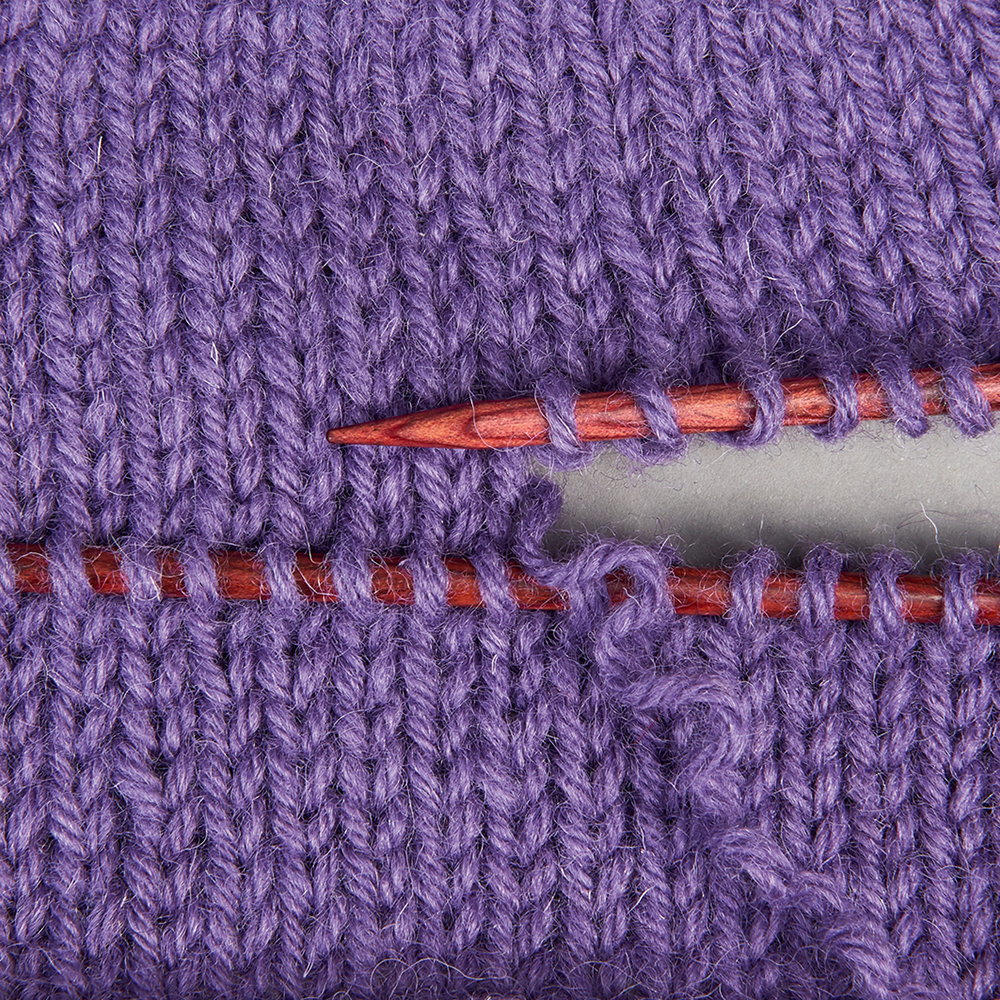
When you’re done, you should have two needles full of stitches, one from the upper part of the garment and one from the lower part (or the rib).
Step 5
Check knitting direction!
If you’re lengthening the garment, decide in which direction you want to knit the extra section. If you’re working stocking stitch, you can go up or down and the pattern will look the same. However, if there is a texture, such as rib, cables or a colour pattern on the garment, you’ll probably want to knit bottom up, so that the new piece won’t look strange and misaligned. Make sure that where you’re cutting allows for this.
Depending on the state of the original garment pieces, you may wish to add a stripe here. A well worn child’s sweater, for example, may have faded after several washes, so even if you are able to match the yarn, it might be obvious where the join is.






